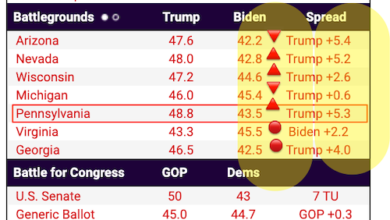
There’s controversy over how good a proxy the degree of food processing is for the nutritional value of food. Nevertheless, there is also substantial evidence that the category of ultraprocessed, which includes some arguably not-bad offerings like whole grain bread,1 contribute in a big way to bad health outcomes. The US, with its large food companies being very much in ultraprocessed food business, are mounting an effort to challenge and delay the labeling of ultraprocessed items, even though similar requirements are being implemented in other countries.
Before we turn to a Wall Street Journal update, some stage-setting about food processing. From Harvard’s School of Public Health:
The U.S. Department of Agriculture (USDA) defines a processed food as one that has undergone any changes to its natural state—that is, any raw agricultural commodity subjected to washing, cleaning, milling, cutting, chopping, heating, pasteurizing, blanching, cooking, canning, freezing, drying, dehydrating, mixing, packaging, or other procedures that alter the food from its natural state….
A popular system to classify processed foods was introduced in 2009, called the NOVA classification. It lists four categories considering the degree to which a food is processed and the purpose of these modifications:
Unprocessed or minimally processed foods
Unprocessed foods include the natural edible food parts of plants and animals. Minimally processed foods have been slightly altered so they can be more easily stored, prepared, and eaten; this processing level does not substantially change the nutritional content of the food. Examples include cleaning and removing inedible or unwanted parts, grinding, refrigeration, pasteurization, fermentation, freezing, and vacuum-packaging. This allows the food to be preserved for more time and remain safe to eat. Many fresh fruits, vegetables, whole grains, nuts, meats, plain yogurt with no added sugar or artificial sweeteners, fresh and dried pasta, tea, coffee, and milk fall into this category.Processed culinary ingredients
This category includes food ingredients used in kitchens to prepare and season foods that are derived from minimally processed foods by pressing, refining, grinding, or milling. They are typically not eaten on their own but are used to prepare other foods. Examples include oils from plants, seeds, and nuts; vinegar made by acetic fermentation of wine; honey extracted from combs; and syrup from maple trees without added flavors or stabilizers.Processed foods
In this category, the processing increases the durability of foods or modifies or enhances their flavor and texture. Processed foods derive from either of the two previous groups but have added salt, sugar, and/or fat. Some canned fruits and vegetables, some cheeses, freshly made bread, and canned fish are examples. These foods usually are made from at least 2-3 ingredients and can be readily eaten without further preparation.Ultra-processed foods
Also commonly referred to as “highly processed foods,” these are foods from the prior group that go beyond the incorporation of salt, sugar, and fat to include artificial colors and flavors, preservatives, thickeners, emulsifiers, and artificial sweeteners that promote shelf stability, preserve and enhance texture, and increase palatability. Several processing steps using multiple ingredients are involved in an ultra-processed food. They are often mass-produced with low-cost ingredients making them cheap and highly profitable. It is speculated that these foods are designed to specifically increase cravings so that people will overeat them and purchase more. Ultra-processed foods are typically ready-to-eat with minimal additional preparation. Not all but some of these foods tend to be low in fiber and nutrients. Examples are sugary drinks, cookies, some crackers, chips, and breakfast cereals, some frozen dinners, and luncheon meats.
Tofu, which some would consider to bear only a marginal resemblance to food, is considered minimally processed. But instant miso soup is wltraprocessed. So are things you might not consider unhealthy, like store bought salad dressings, even the sort sold in health food stores by virtue of not having sugars and using “good” oils like avocado oil. Anything with stabiilzers or emulsifiers in it is generally considered to be ultraprocessed….although an article at PubMed argues chocolate should get a pass.
There is an argument to be made (and the Big Food manufacturers are all over this one), that not all ultraprocessed foods are junky and cite baby formula as an example of how the ultraprocessed label would stigmatize the consumption of items that can be important to a healthy diet. The fact that the ultraprocessed category is so broad means industry incumbents are arguing for more granular classification before moving to any labeling scheme.
Scientist counter by saying the perfect is the enemy of the good, and the evidence is so compelling regarding the public health cost of advanced economy overconsumption of these often only sort of food items that officials show move ahead now and tidy up on the fly. For instance, from a December 2023 article in Advances in Nutrition:
The United States is a leading consumer of ultraprocessed foods (UPFs) globally, with a staggering 55% of adults’ energy intake coming from these products. In addition to enhanced processing techniques, Nova-defined UPFs also contain cosmetic additives to enhance palatability, profitability, and shelf-life, at no nutritional value. Recent meta-analyses documented significant adverse associations of UPFs with diabetes and cardiovascular disease. Building on this growing body of literature, Vitale et al. conducted an comprehensive systematic review, highlighting the following 3 salient conclusions: 1) heterogeneity in risk estimates is not as profound as some UPF industry and other stakeholders argue; 2) UPF classification should evolve to reflect both food processing and nutritional value; and 3) although the quality of UPF research can (and should) be improved on, limitations of the current evidence base are not insurmountable, nor do they serve as sole justification to delay public health interrogation around UPFs.
For the inquisitive, see a typical 2019 study, Consumption of ultra-processed foods decreases the quality of the overall diet of middle-aged Japanese adults, published at Cambridge University Press.
Now to the politics. The Wall Street Journal discusses how ultraprocessed food makers are fighting efforts to force more disclosure or other regulation. On the one hand, the extremely powerful sugar lobby has successfully held long-standing campaigns against having US diet recommendations recommend strongly against much sugar consumption. On the other, these initiatives are gaining steam in other countries. And mere press coverage of this struggle is raising awareness at least among health-conscious consumers. From the Journal:
Food-industry groups and makers of goods from ice cream to pasta sauce are stepping up lobbying, pushing back as the U.S. government probes the health effects of heavily processed food. It is a new front in a struggle that could reshape America’s approach to nutrition and threaten profits for companies behind foods throughout much of the supermarket….
Greater attention to processing marks a major new challenge for food makers. U.S. dietary advice for decades has focused largely on individual nutrients such as sugar, salt or saturated fat. By contrast, concerns over processing strike at the heart of how most packaged food is produced.
“It is going to rock the world for the food industry,” said Dr. Dariush Mozaffarian, a cardiologist and professor of nutrition and medicine at Tufts University. “That’s never been a standard to which they’ve been held before.”
Behind the scenes, food-industry proponents have also begun pressing for more oversight of government-funded research on ultra-processed foods, according to industry lobbyists. Less processing, they say, could lead to more food waste, higher prices and problems for consumers who might struggle to store more fresh foods….
Governments including Canada, Mexico, Peru, Brazil and Israel have told consumers to limit consumption of highly processed foods. Colombia’s government last year began taxing purchases of ultra-processed foods, and some food manufacturers in France have begun labeling their products to indicate their degree of processing.
Many food-industry groups, companies and consultants argue that a widely used Brazilian classification system is overly simplistic and unhelpful to consumers, lumping together packaged bread and infant formula in the same ultra-processed category as cookies and chicken nuggets.
No matter what Big Food would like, my sense is this horse has left the barn and is well on its way to being in the next county. There has increasing neuroticism among those with the time and money to be health-conscious for decades. Although I can’t prove it, it seems to reflect both understandable distrust of an increasingly polluted environment (microplastics, forever chemicals, and now measurable levels of drugs in some cities’ tap water) and alienation from nature, as in increasing and often warranted concern about food that comes in packages. Among the rich, food fetishism has been fashionable for many years, with manifestations including beef farmers that not only allow their customers to pick which grass-eating steer is theirs as it is being prepared for slaughter, but also to pick the mix of grass it eats, to it being common for dinner party guests to dictate to hosts their often considerable eating restrictions. That sort of “food mistrustful” stance has been moving down market. The campaign against ultraprocessed food could be catching the right moment as more and more mass market customers are willing to limit their diets consistent with a health prescription of sorts.
To put it another way: most ultraprocessed foods are a bad idea from a health and weight loss perspective. There is a big and growing industry that builds on related fads, like anti-aging regimes, sports performance enhancement, or using diet to treat various ailments. Harping on the dangers of ultrarocessed foods is a no-brainer idea for all of these health improvement schemes to better scare their charges into not eating Cheetos and fast foods.2
_____
1 Despite nutritionists depicting whole grain bread as a “good” choice, my father, who baked his own bread (and used many recipes), reported that they were still composed very heavily of white flour. If that was true of his home-made bread, you can be sure that goes double for store-bought bread.
2 Forgive me a mini-rant. The NIH should be paying me for all the diet and dietary supplement experiments I have run on myself over the decades. Being a nerd, I also know the underlying studies better than most laypeople and many (kill me now) nutritionists and “health coaches” do. Earlier today, in part to curry favor with a friend but also out of curiosity, I went to a presentation by a local dermatologist. All derms who are at all business-minded provide cosmetic treatments, such as Botox and the better ones are on the lookout for new potions and treatments. Instead, this derm is in the anti-aging business, and was making diet recommendations like never eat fruit (she claimed it causes inflammation) and repeatedly said eating fats causes high cholesterol (a double loser, since as KLG has said, cholesterol is not a very good predictor of heart disease risk, and your body makes cholesterol from carbs, not fat). I could go on but I was trapped, listening to anti-aging fad-dom, worse from someone who was not an internal medicine specialist, endocrinologist, or even a GP, yet alarmingly also said she trains other doctors about anti-aging.
Source link





